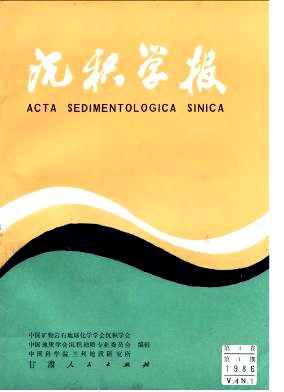THE GENESIS OF BAUXITE AND THE SEDIMENTARY PROCESS OF ITS ORE DEPOSIT IN CHINA
- Received Date: 1985-10-22
- Publish Date: 1986-03-10
Abstract: Bauxite in China is mainly palaeoresiduum sedimentary bauxite deposits (98.83% in the total reserve), which is called the karst type abroad. And the lateritic type of bauxite deposits is only 1.17% in the total reserve. In China the genetic mechanism of palaeoresiduum sedimentary bauxite deposits is considered as the colloidal chemical sedimentation by the most mineralogists and it is considered as the sedimentation of meohanical elastics and suspended materials. Based on the research results as followings: 1) The Oxygen Isotope Analysis:the δ~(18)O‰. value(SMOW) of the diaspore, which is the main clay mineral in palaeoresiduum sedimentary bauxite deposits, is about +5-+ 10.9, average +9.2. This value verifies that the diaspore is formed by weathering and the crystalinity index of the clay minerals in the bauxite deposits shows the origin of terrigenous clastic materials as wells 2) No sedimentary traces which are often seen in water sediments, such as bedding, cross bedding, ripple mark and crack, are found in the deposits, and neither are animal fossils; 3) The ores of the palaeoresiduum sedimentary bauxite deposits are all earthy, semiearthy or dense in structure without exception and under microscope their textures are psammitic or gravel-clastic and the shape of the clastic is subround or sub-edge-anglar, indicating the sediments to be transported, and no mechanical differential sedimentation has been found, thus they are quite similar to the earthy or semiearthy clastic bauxite ores near palaeoshores or in the central of sea basins; 4) The striae on the surface of diaspores under scanning electron microscope and the cracks of oolitic grains under microscope indicate the transportation in atmosphere; 5) Pores are well developed in the bauxite ores under scanning electron microscope many miarolitic cavities, in which there are secondary diaspores with good crystalinity as well as boehmites and under microscope can be seen secondary kaolinites filled between psammitic grains and gravel-clastic grains, and the ores become poor in quality in a certain depth below ground water, which indicates that SiO2 has been leached away and alumina is enriched in the epidiagen-etic stage; the author thinks that the origin of the palaeoresiduum sedimentary deposits in China is "a terrestrial and hydatogenous deposit with superficial enrichment". The sedimentary process of the ores can be divided into three stages as followingS: 1) Alumina-bearing rocks in continent become drift-bed calcium lateritic beds or lateritic beds in bauxite-bearing residuum through weathering; 2) After sea water or lake water covers the eluvial beds, primary bauxite stratum in poor quality is formed during sedimentation; 3) The primary ore bed goes up with the rise of crust and, hence, enters into the superficial stage, upon the action of groundwater or surface water the SiO2 is leached but alumina enriched, and finally the bauxite deposit with industrial value is formed.
| Citation: | Liao Shifan. THE GENESIS OF BAUXITE AND THE SEDIMENTARY PROCESS OF ITS ORE DEPOSIT IN CHINA[J]. Acta Sedimentologica Sinica, 1986, 4(1): 1-7. |






 DownLoad:
DownLoad: